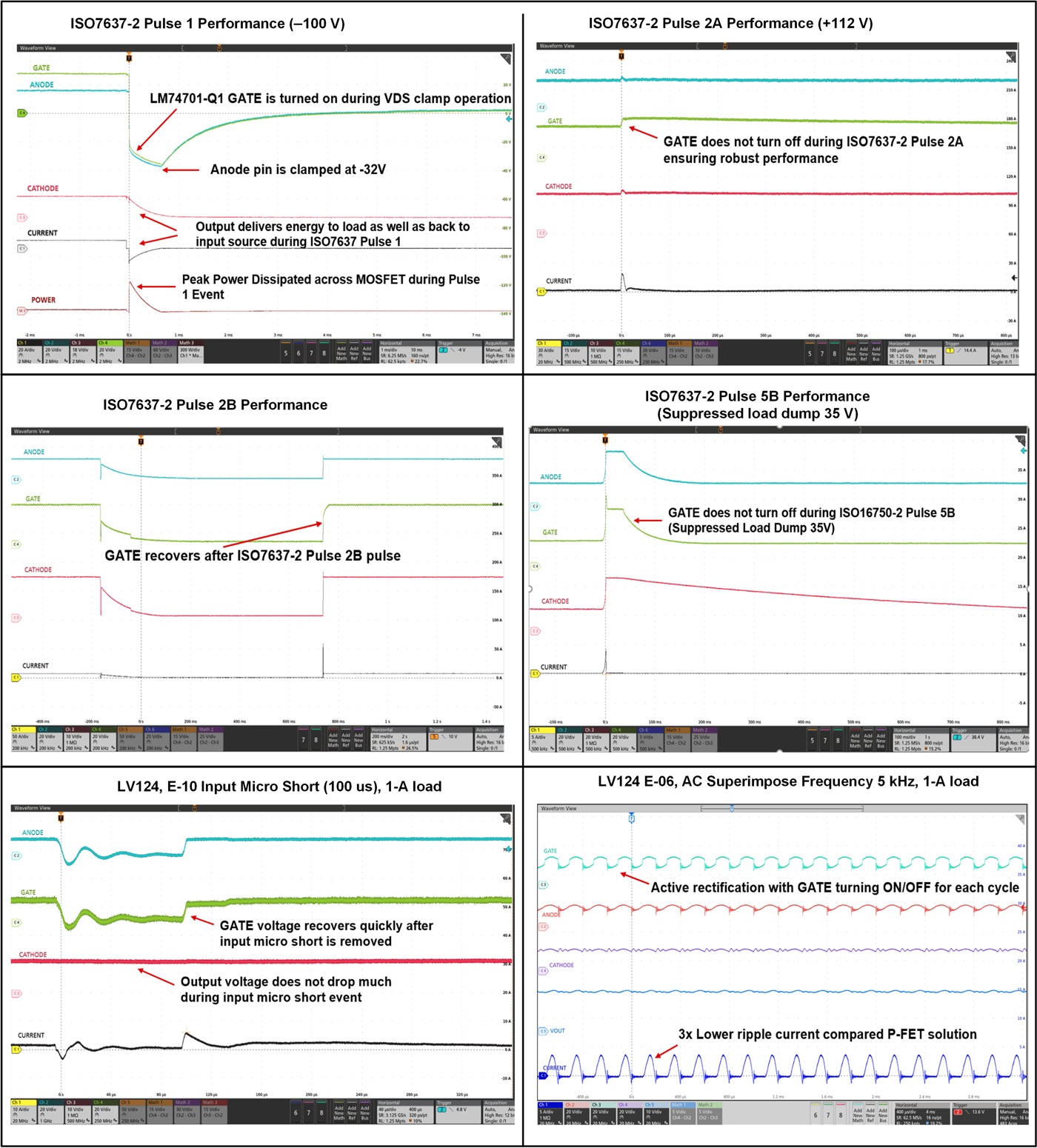SLYT818 November 2021 LM74701-Q1 , LM74721-Q1
- 1 Introduction
- 2 Automotive reverse-battery protection with ideal diode controllers
- 3 TVS-less automotive reverse-polarity protection using ideal diode controllers
- 4 TVS-less ideal diode: mode of operation and working principle
- 5 External MOSFET
- 6 Output Capacitor (COUT)
- 7 TVS-less ideal diode controller EMC performance
- 8 Conclusion
- 9 Related Websites
- 10Important Notice
7 TVS-less ideal diode controller EMC performance
Figure 7-1 illustrates the system-level performance of the LM74701-Q1 under:
- Input micro-short interruptions (LV124-E10 test) and AC superimposed frequency (LV124-E06) requiring a reverse-current blocking feature to hold up the output voltage. An ideal diode controller is not expected to engage VDS clamp operation.
- An ISO 7637-2 Pulse 1 transient event (a –100-V transient) where the ideal diode controller engages into VDS clamp operation and energy dissipates across the MOSFET to achieve TVS-less operation.
- ISO 7637-2 Pulses 2A and 2B transient events.
- ISO 16750-2 Pulse 5B suppressed load dump event (with a suppressed load dump of 35 V).
- ISO 7637-2 Pulses 3A and 3B, short-duration transient events filtered by input and output capacitors that do not affect device performance nor output voltage levels.
Certain automotive ECU designs consist of loads that are always powered on and demand overall low system quiescent current during active operation. For TVS-less input reverse-polarity protection of always-on systems, the LM74721-Q1 ideal diode controller has a typical active quiescent current of 25 µA.
 Figure 7-1 TVS-less ideal diode
controller system-level EMC performance.
Figure 7-1 TVS-less ideal diode
controller system-level EMC performance.